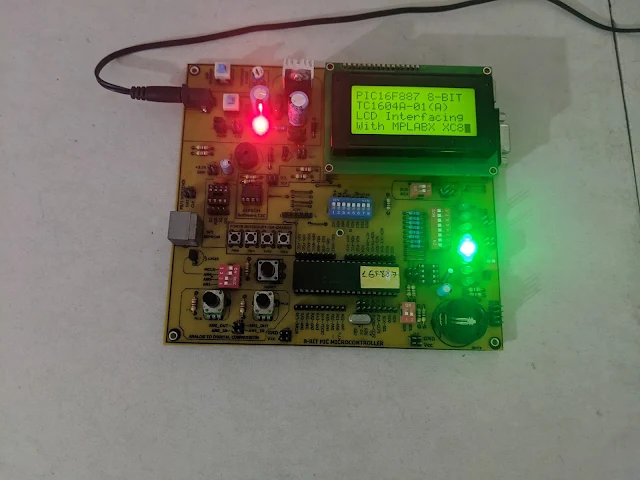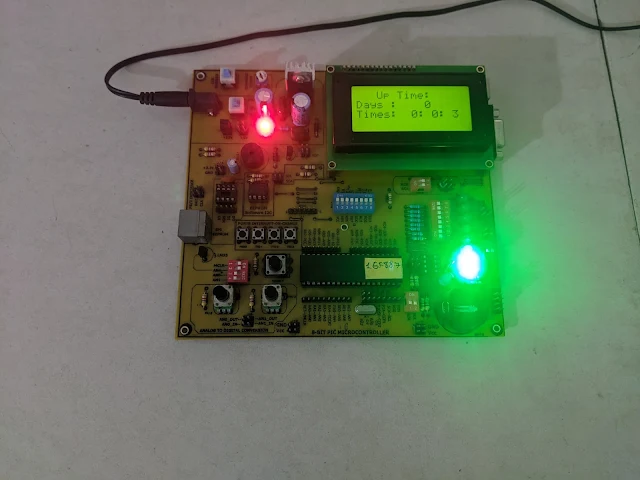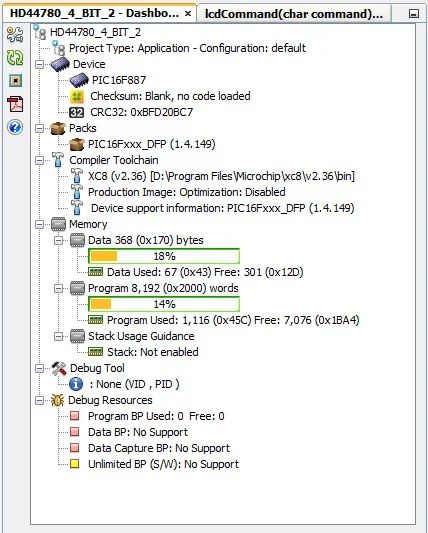In previous tutorial, I use a PIC16F887 controller to interface with an HD44780 character LCD module in 8-bit mode. However most of this electronics designer use a 4-bit mode operation. Data transferring to this LCD is still 8-bit wide but it sends twice, first the higher nibble then the lower nibble of data byte. This can save the number of microprocessor I/O pins.
 |
| Prototype Board Testing |
The programming is no complex. The controller just process the transferring of these two nibbles of data byte. LCD control pins remain the same as per in previous example. We only use the higher nibble (DB4...D7) of LCD for data bus. The lower nibble (DB0...D3) must left blank or connects to ground.
The following example display the system running time since it starts up.
Click here to download its source file, or with LCD library.
MPLABX IDE v6.15 is pretty nice to use.

I use my own PIC16F887 prototype board to test this example program.
 |
| Prototype Board Testing |

No comments:
Post a Comment